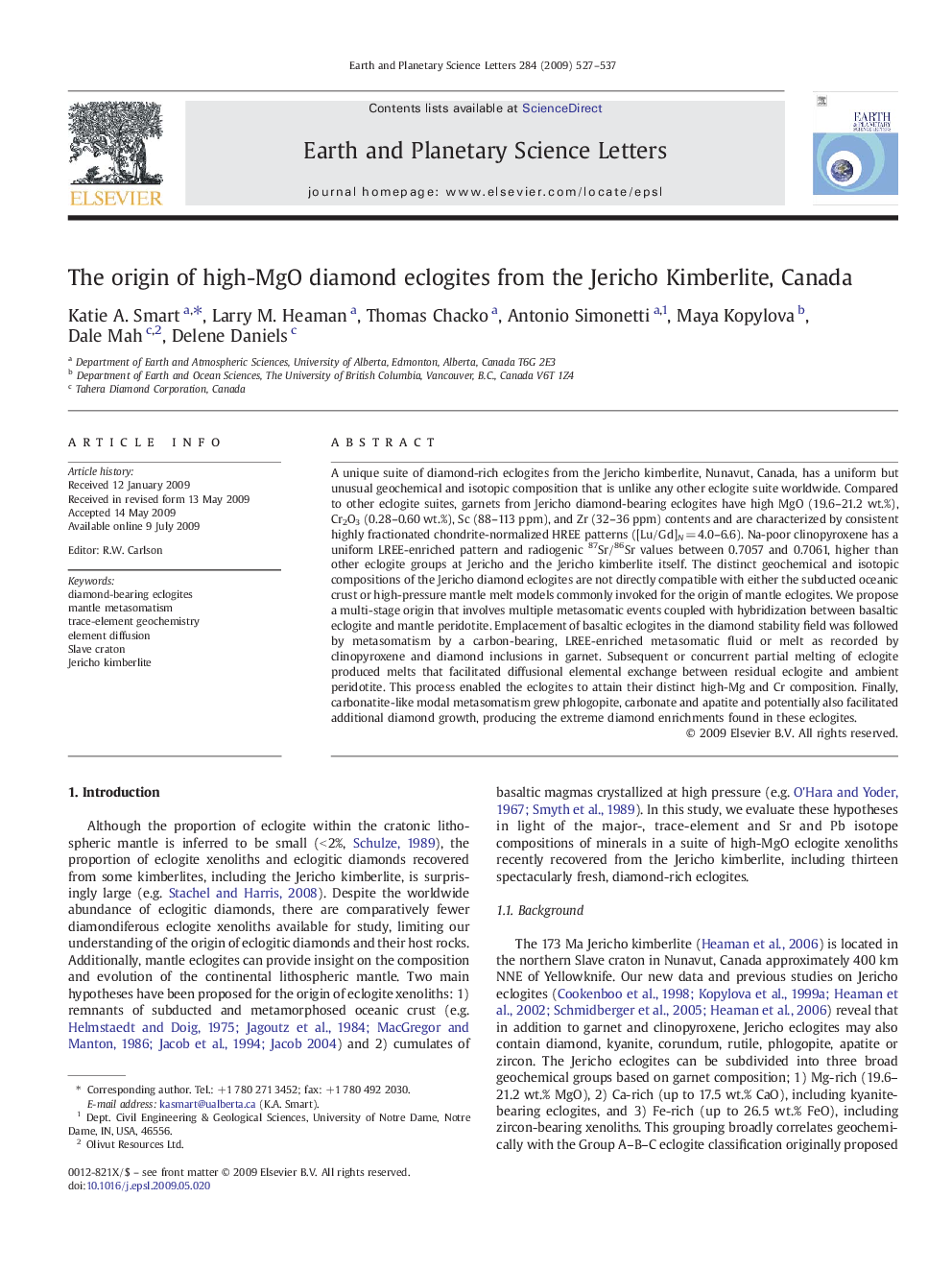| Article ID | Journal | Published Year | Pages | File Type |
|---|---|---|---|---|
| 4679004 | Earth and Planetary Science Letters | 2009 | 11 Pages |
A unique suite of diamond-rich eclogites from the Jericho kimberlite, Nunavut, Canada, has a uniform but unusual geochemical and isotopic composition that is unlike any other eclogite suite worldwide. Compared to other eclogite suites, garnets from Jericho diamond-bearing eclogites have high MgO (19.6–21.2 wt.%), Cr2O3 (0.28–0.60 wt.%), Sc (88–113 ppm), and Zr (32–36 ppm) contents and are characterized by consistent highly fractionated chondrite-normalized HREE patterns ([Lu/Gd]N = 4.0–6.6). Na-poor clinopyroxene has a uniform LREE-enriched pattern and radiogenic 87Sr/86Sr values between 0.7057 and 0.7061, higher than other eclogite groups at Jericho and the Jericho kimberlite itself. The distinct geochemical and isotopic compositions of the Jericho diamond eclogites are not directly compatible with either the subducted oceanic crust or high-pressure mantle melt models commonly invoked for the origin of mantle eclogites. We propose a multi-stage origin that involves multiple metasomatic events coupled with hybridization between basaltic eclogite and mantle peridotite. Emplacement of basaltic eclogites in the diamond stability field was followed by metasomatism by a carbon-bearing, LREE-enriched metasomatic fluid or melt as recorded by clinopyroxene and diamond inclusions in garnet. Subsequent or concurrent partial melting of eclogite produced melts that facilitated diffusional elemental exchange between residual eclogite and ambient peridotite. This process enabled the eclogites to attain their distinct high-Mg and Cr composition. Finally, carbonatite-like modal metasomatism grew phlogopite, carbonate and apatite and potentially also facilitated additional diamond growth, producing the extreme diamond enrichments found in these eclogites.
